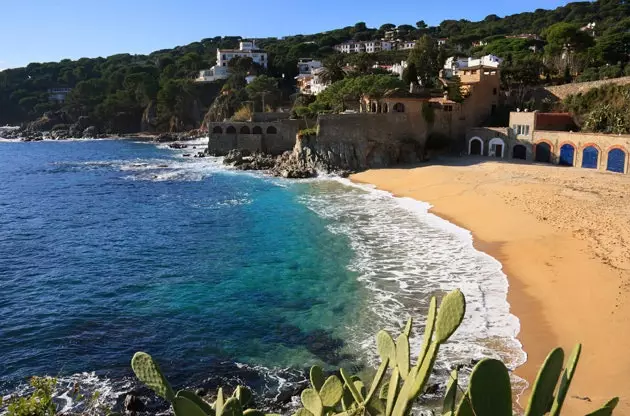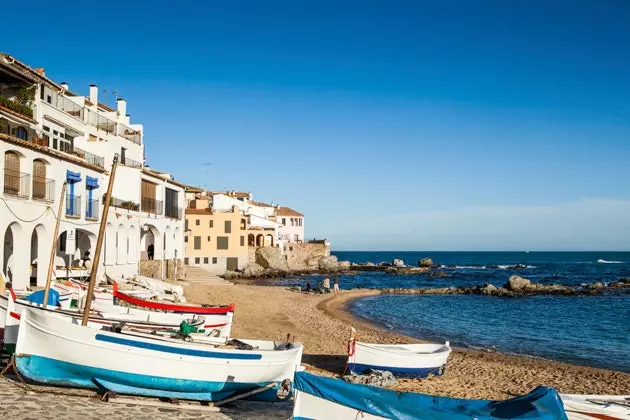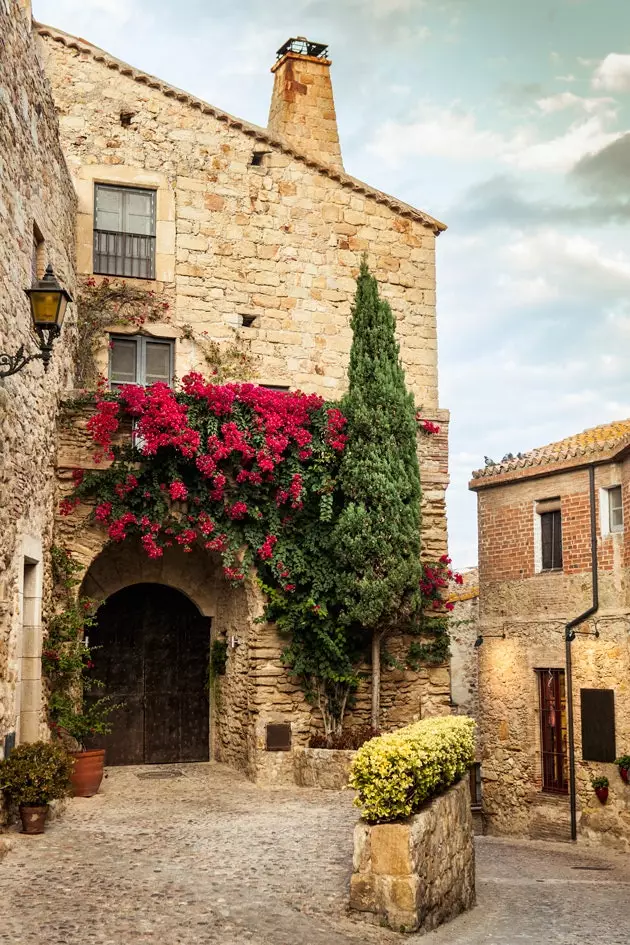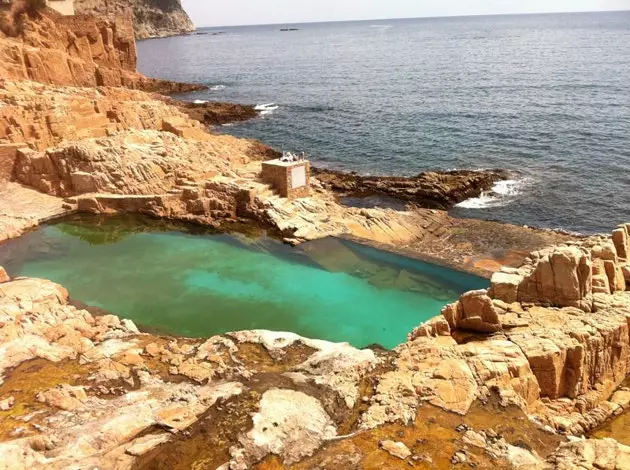
Calella de Palafrugell
Three days go a long way. Especially if you have a racing car that runs on diesel and a natural and irremediable attachment to the spirit of On the road (for a fee, in these parts). To travel the kilometers of benefits of the Lower Ampurdán it would take months at the wheel. We put honey on your lips with this succulent appetizer in a region that today has become home and a benchmark for the world's gastronomic elite.
PALAFRUGUELL, THE CRADLE OF GENIUS
On March 8, 1897, this small town in Bajo Ampurdán saw the birth of one of the best humanists of the country's intellectual harvest that the 19th century has given. The talent of the writer and journalist Josep Pla would begin to bear fruit at 49 Carrer Nou. Today the foundation that bears his name (Carrer Nou, 51) dedicates its work to the protection and promotion of the vast work of the prolific Empordà native with an agenda that includes literary and journalistic activities, routes through the area, exhibitions and even gastronomic symposiums.
One way to perceive all the splendor of these kilometers of coastline is by taking the Camino de Ronda, a sandy walk parallel to the sea that born in Calella de Palafrugell and died on the Llafranc promenade. In its tiny marina, you will find the stairs that lead to the Sant Sebastià lighthouse from 1857, at a height of 178 meters above sea level. At the top, the exclusive four-star Hotel Far (Muntanya de Sant Sebastià, Llafranc) It has the best views of the beaches of Palafrugell and surroundings. And given that we are in one of the best-endowed regions at a gastronomic level, Toy Sáez, the chef of his restaurant, has carved out a niche for himself among critics and diners from here and there with his rice dishes, fish cooked to perfection and seafood from the neighboring Palamós fish market.
The Pa i Raim restaurant (Torres Jonama, 56) is living his best moment in the former residence of the genius from Empordà. A manor house, generous in size, run by his descendants and specialized in excellent market cuisine, ** the same one that has brought this region to the top of world gastronomy **. What can't you miss? One of its three menus (pica pica, seasonal or tasting) in a leafy garden full of lyrical connotations.

If Tuscany had a sea, it would be like this
PALS, A VILLA TO SAY 'I DO'
From Palafrugell, about seven kilometers towards Girona, the population of countries , a delicious medieval site that exhibits the church of San Pedro, one of the most charming parishes that I can remember. It is advisable to park the car at the entrance to Pals and, with appropriate footwear, go up to the parish through the cobbled streets of the Gothic quarter, with its semicircular arches and ocher stone facades. that are so reminiscent of Tuscany. From the Torre de las Horas, a Romanesque structure built between the 11th and 13th centuries, or from the Josep Pla viewpoint, it is easy for the imagination to fly contemplating the erotic fields of the Ampurdán, the beach of Pals and, beyond, the Medes Islands, a tiny archipelago declared a marine natural jewel since 2010.
The slopes of the winding streets of Pals are a kind of urban triathlon that culminate in a sudden awakening of appetite. And if there is a place of pilgrimage, with the permission of the priest of the parish of San Pedro, that's Vicus (Enginyer Algarra, 51), the gastronomic reward for those who leave the beaches of the Costa Brava for a while. What used to be the Can Barris family hostel has become a elegant space specializing in Catalan cuisine, run by Elisabet and Gerard since 2011. The culinary antics are directed by the chef Damià Rafecas, from kitchens such as ABaC, Sant Pau , L'Esguard and El Racó d'en Freixa. It is worth reserving a table for one of their pairing dinners with wines from the region.

A street in Pals
AIGUABLAVA AND THE PROMISED POOL
Begur, the last stop on our short route, inspired the title of one of the stories of Pla (One of Begur), and which is part of Five stories of the sea, a compilation of chronicles that illustrate the atmosphere of this region of Girona through its light, the climate, its towns fishing, that unique culture and philosophy of relaxed life.
There are eight beaches and coves registered in the municipality of Begur. From north to south, the extensive Racó beach, the nudist Illa Roja and Sa Riera, the closest to the town of Begur. To the east, Aiguafreda, guarded by Mount Rodó, and Sa Tuna, difficult to access. At the southern end of the coast of Begur, Playa Fonda, which remains almost virgin, and Fornells, the cove where the Empordà coastline was officially named: Costa Brava.
Our last stop is due to a whim of romantic overtones. The prize at the end of the road responds to the name of Aiguablava, the southernmost cove of the municipality, at the foot of a steep cliff. With fine sand and crystal clear waters, the beach is bordered by an exuberant natural environment that has barely been developed. Among the sparse architecture, a historic family hotel stands out. The emblematic Aigua Blava, founded by Clara Capellà in 1934 and run to this day by the same family, is proclaimed winner in the category of most beautiful panorama from the bay of Aigua Blava. Its chef, Lluís Ferrés, dedicated to traditional Catalan cuisine, has earned the respect of foodies and experts in a region that demands at least the highest excellence in its kitchens.
An award for those who wake up early: from the hotel, a dirt road that goes unnoticed leads to a natural wonder (as illustrated in the last photograph) whose name I do not want to remember. In Bajo Ampurdán, yes I do.

The natural pool of Begur
